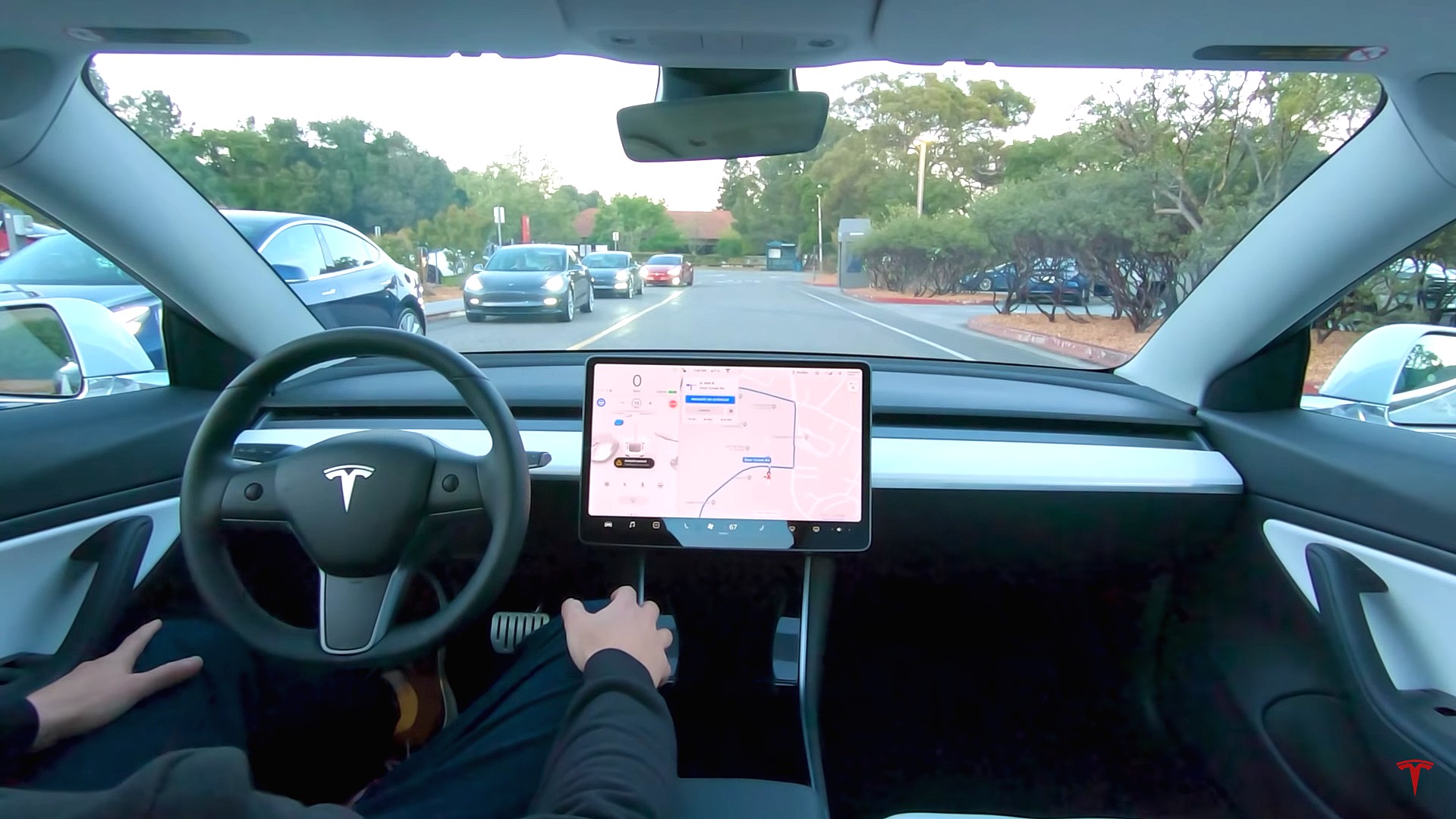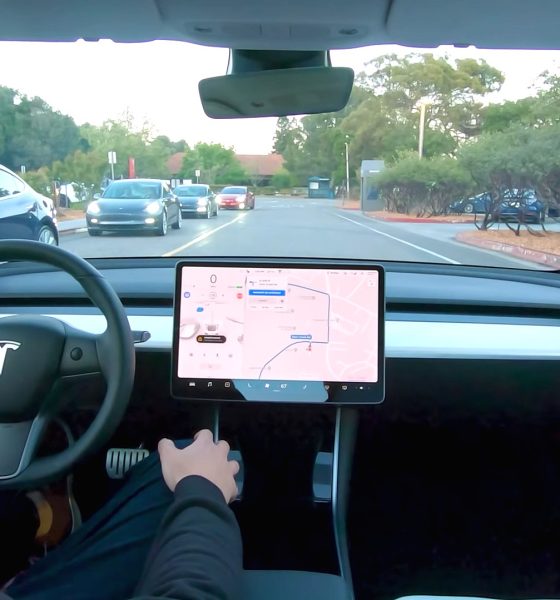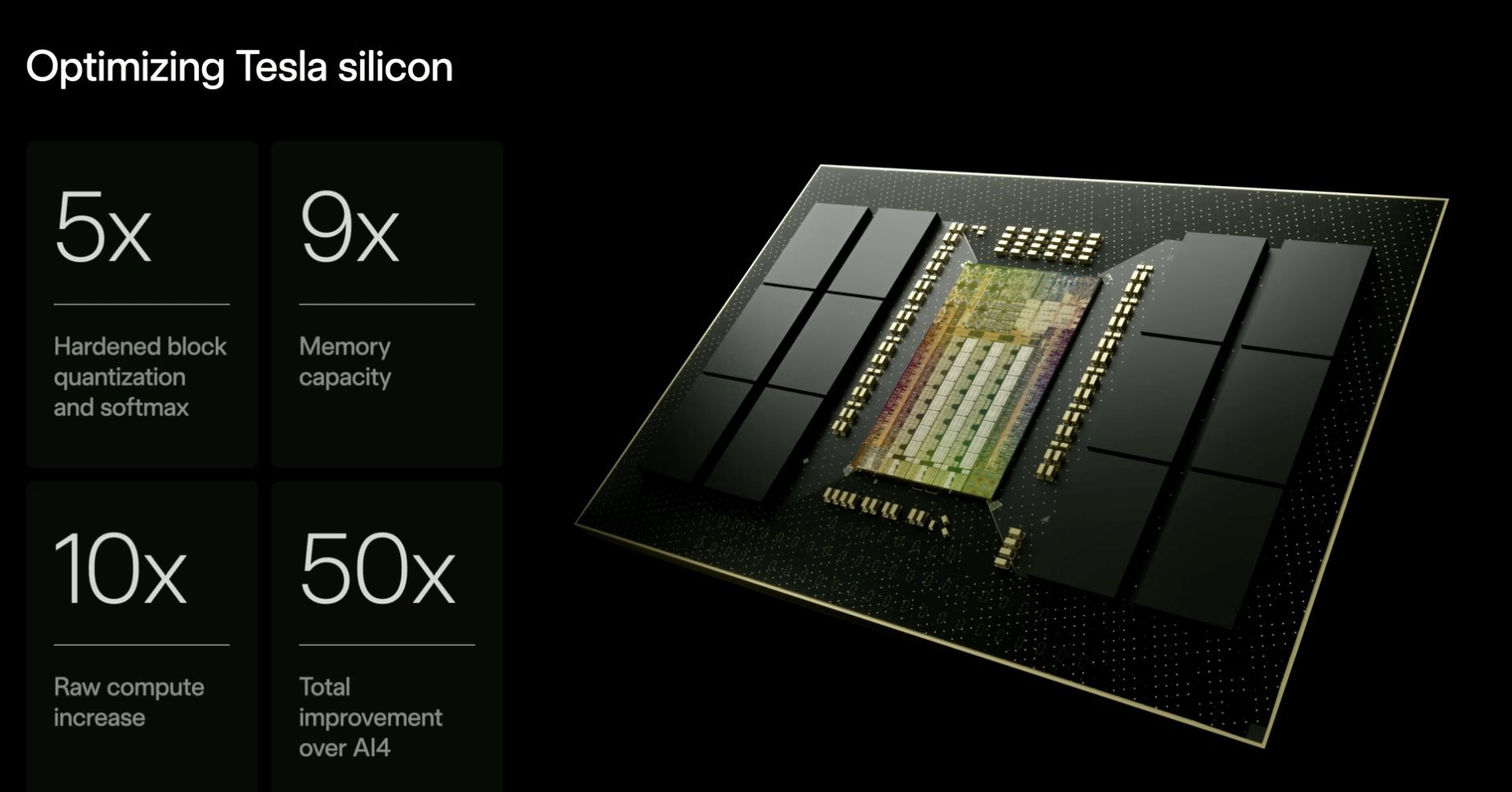

News
Tesla’s in-house Full Self-Driving chip puts TSLA 4 years ahead of competition: analyst
Tesla’s decision to develop its Full Self-Driving (FSD) computer chip in-house has put it four years ahead of the competition, according to ARK Invest analyst James Wang.
Wang laid out the case for the all-electric car maker’s custom automotive-grade computer against the next-best options in the market, all Nvidia products, in an article on ARK Invest’s website. His stated goal in the piece was to clarify Tesla’s position and achievement with full self-driving in simple terms as well as explain why an off-the-shelf chip would not have accomplished the same feat.
Admittedly, Tesla’s Autonomy Day livestream debuting the arrival of its Full Self-Driving computer was chock full of very technical details that many outside the computer science world indicated were difficult to follow. Thus, Wang’s FSD simplification is helpful for gaining insight into Tesla’s autonomous driving progress in terms of the bigger industry picture.
In summary, by focusing only on what its particular needs were for its particular software demands, Tesla was was able to improve its chip’s performance efficiency to a level that has allowed it to “leapfrog” over competitors. Wang predicts that by 2021, Tesla will be ready to release its next generation FSD computer while its closest competitor in terms of optimal peak utilization is just coming to market.
Nvidia is a prominent and highly successful leader in computer chip design, and Tesla already uses its products for Hardware 2.5, the computer currently running the electric car maker’s Autopilot features. That said, the industry giant has three self-driving-focused chips in its lineup: Xavier (in production), Pegasus (readying for production) and Orin (still pending an official announcement).
Pegasus is a Level 5 self-driving computer, as is Tesla’s FSD; however, it has twice as many chips as FSD, consumes seven times more power than FSD, and is too big and expensive for the Model 3. Since Nvidia designs chips for a wide range of hardware manufacturers, much like the Windows and Android operating systems are designed to be flexible enough for different computer and smartphone hardware suites, their functionality cannot be overly streamlined for one system over another. In contrast, Tesla (like Apple hardware/software) can focus all of its autonomy efforts on its specific hardware and software needs, thus achieving a greater output than Nvidia’s product.

In a follow up to Tesla’s Autonomy Day presentation wherein FSD was compared to Nvidia’s Xavier computer, a chip designed for semi-autonomous driving only, the chip manufacturer published a company blog piece drawing attention to Pegasus’ capabilities as a better measure for analysis. As pointed out in Wang’s analysis, the FSD and Pegasus still do not achieve the same metrics, leaving Tesla well positioned amongst its self-driving computer peers. Despite the issue, though, Nvidia’s conclusion was a positive response to the car maker’s achievement: Tesla has raised the bar on self-driving and other car manufacturers need to get on board before falling too far behind.
During the Autonomy Day presentation, Tesla CEO Elon Musk crowned FSD as “objectively best in the world”, and James Wang’s analysis is yet another outline of why that is arguably the case. Tesla’s Full Self-Driving Computer (formerly known as Hardware 3) is currently being installed in all new production vehicles, and owners who purchased Full Self-Driving for a car produced in 2016 or later will receive a free upgrade to the FSD computer in the near future. Musk has further predicted that Tesla’s full self-driving software will be complete by the end of this year and fully operational by the second quarter of next year.

News
Tesla adds new feature that will be great for crowded parking situations
This is the most recent iteration of the app and was priming owners for the slowly-released Holiday Update.

Tesla has added a new feature that will be great for crowded parking lots, congested parking garages, or other confusing times when you cannot seem to pinpoint where your car went.
Tesla has added a new Vehicle Locator feature to the Tesla App with App Update v4.51.5.
This is the most recent iteration of the app and was priming owners for the slowly-released Holiday Update.
While there are several new features, which we will reveal later in this article, perhaps one of the coolest is that of the Vehicle Locator, which will now point you in the direction of your car using a directional arrow on the home screen. This is similar to what Apple uses to find devices:
Interesting. The location arrow in the Tesla app now points to your car when you’re nearby. pic.twitter.com/b0yjmwwzxN
— Whole Mars Catalog (@wholemars) December 7, 2025
In real time, the arrow gives an accurate depiction of which direction you should walk in to find your car. This seems extremely helpful in large parking lots or unfamiliar shopping centers.
Getting to your car after a sporting event is an event all in itself; this feature will undoubtedly help with it:
The nice little touch that Tesla have put in the app – continuous tracking of your vehicle location relative to you.
There’s people reporting dizziness testing this.
To those I say… try spinning your phone instead. 😉 pic.twitter.com/BAYmJ3mzzD
— Some UK Tesla Guy (UnSupervised…) (@SomeUKTeslaGuy) December 8, 2025
Tesla’s previous app versions revealed the address at which you could locate your car, which was great if you parked on the street in a city setting. It was also possible to use the map within the app to locate your car.
However, this new feature gives a more definitive location for your car and helps with the navigation to it, instead of potentially walking randomly.
It also reveals the distance you are from your car, which is a big plus.
Along with this new addition, Tesla added Photobooth features, Dog Mode Live Activity, Custom Wraps and Tints for Colorizer, and Dashcam Clip details.
🚨 Tesla App v4.51.5 looks to be preparing for the Holiday Update pic.twitter.com/ztts8poV82
— TESLARATI (@Teslarati) December 8, 2025
All in all, this App update was pretty robust.
Elon Musk
Tesla CEO Elon Musk shades Waymo: ‘Never really had a chance’

Tesla CEO Elon Musk shaded Waymo in a post on X on Wednesday, stating the company “never really had a chance” and that it “will be obvious in hindsight.”
Tesla and Waymo are the two primary contributors to the self-driving efforts in the United States, with both operating driverless ride-hailing services in the country. Tesla does have a Safety Monitor present in its vehicles in Austin, Texas, and someone in the driver’s seat in its Bay Area operation.
Musk says the Austin operation will be completely void of any Safety Monitors by the end of the year.
🚨 Tesla vs. Waymo Geofence in Austin https://t.co/A6ffPtp5xv pic.twitter.com/mrnL0YNSn4
— TESLARATI (@Teslarati) December 10, 2025
With the two companies being the main members of the driverless movement in the U.S., there is certainly a rivalry. The two have sparred back and forth with their geofences, or service areas, in both Austin and the Bay Area.
While that is a metric for comparison now, ultimately, it will not matter in the coming years, as the two companies will likely operate in a similar fashion.
Waymo has geared its business toward larger cities, and Tesla has said that its self-driving efforts will expand to every single one of its vehicles in any location globally. This is where the true difference between the two lies, along with the fact that Tesla uses its own vehicles, while Waymo has several models in its lineup from different manufacturers.
The two also have different ideas on how to solve self-driving, as Tesla uses a vision-only approach. Waymo relies on several things, including LiDAR, which Musk once called “a fool’s errand.”
This is where Tesla sets itself apart from the competition, and Musk highlighted the company’s position against Waymo.
Jeff Dean, the Chief Scientist for Google DeepMind, said on X:
“I don’t think Tesla has anywhere near the volume of rider-only autonomous miles that Waymo has (96M for Waymo, as of today). The safety data is quite compelling for Waymo, as well.”
Musk replied:
“Waymo never really had a chance against Tesla. This will be obvious in hindsight.”
Waymo never really had a chance against Tesla. This will be obvious in hindsight.
— Elon Musk (@elonmusk) December 10, 2025
Tesla stands to have a much larger fleet of vehicles in the coming years if it chooses to activate Robotaxi services with all passenger vehicles. A simple Over-the-Air update will activate this capability, while Waymo would likely be confined to the vehicles it commissions as Robotaxis.
News
Tesla supplier Samsung preps for AI5 production with latest move
According to a new report from Sedaily, Samsung is accelerating its preparation for U.S. production of the AI5 chips by hiring veteran engineers for its Customer Engineering team.

Tesla supplier Samsung is preparing to manufacture the AI5 chip, which will launch the company’s self-driving efforts even further, with its latest move.
According to a new report from Sedaily, Samsung is accelerating its preparation for U.S. production of the AI5 chips by hiring veteran engineers for its Customer Engineering team, which will help resolve complex foundry challenges, stabilize production and yields, and ensure manufacturing goes smoothly for the new project.
The hiring push signals that Tesla’s AI5 project is moving forward quickly at Samsung, which was one of two suppliers to win a contract order from the world’s leading EV maker.
🚨🚨 FIRST LOOK at Tesla’s AI5 chip, which will be available in late 2026 or early 2027 pic.twitter.com/aLomUuifhT
— TESLARATI (@Teslarati) November 6, 2025
TSMC is the other. TSMC is using its 3nm process, reportedly, while Samsung will do a 2nm as a litmus test for the process.
The different versions are due to the fact that “they translate designs to physical form differently,” CEO Elon Musk said recently. The goal is for the two to operate identically, obviously, which is a challenge.
Some might remember Apple’s A9 “Chipgate” saga, which found that the chips differed in performance because of different manufacturers.
The AI5 chip is Tesla’s next-generation hardware chip for its self-driving program, but it will also contribute to the Optimus program and other AI-driven features in both vehicles and other projects. Currently, Tesla utilizes AI4, formerly known as HW4 or Hardware 4, in its vehicles.
Tesla teases new AI5 chip that will revolutionize self-driving
AI5 is specialized for use by Tesla as it will work in conjunction with the company’s Neural Networks, focusing on real-time inference to make safe and logical decisions during operation.
Musk said it was an “amazing design” and an “immense jump” from Tesla’s current AI4 chip. It will be roughly 40 times faster, and have 8 times the raw compute, with 9 times the memory capacity. It is also expected to be three times as efficient per watt as AI4.
“We’re going to focus TSMC and Samsung, initially, on AI5. The AI5 chip, design by Tesla, it’s an amazing design. I’ve spent almost every weekend for the last few months with the chip team working on AI5.”
It will be 40x better than the AI4 chip, Musk says.
— TESLARATI (@Teslarati) October 22, 2025
AI5 will make its way into “maybe a small number of units” next year, Musk confirmed. However, it will not make its way to high-volume production until 2027. AI5 is not the last step, either, as Musk has already confirmed AI6 would likely enter production in mid-2028.








